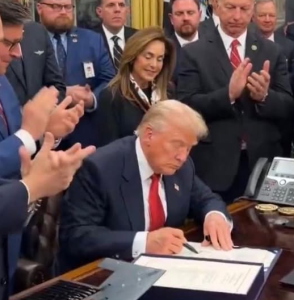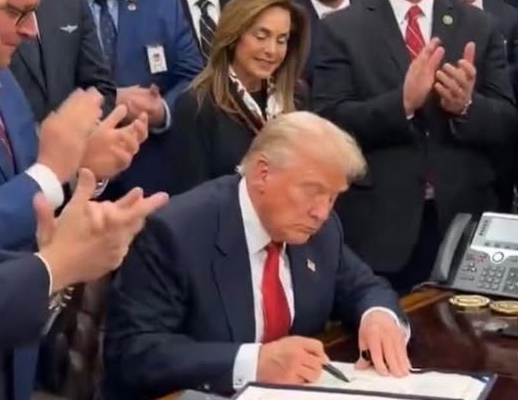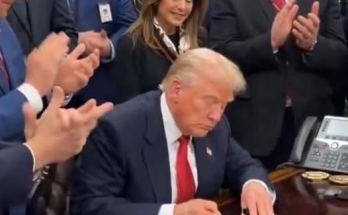
What the proposal is
President Trump and his administration have floated a plan to send out checks of at least $2,000 to many Americans, funded by tariff revenue. Philly Burbs+3People.com+3Reuters+3
Key points of the provision
-
The checks are described as a “dividend” from tariffs: the idea being that the government collects tariffs on imports and then rebates some of that back to the public. People.com+2Investopedia+2
-
The President’s phrasing: “A dividend of at least $2,000 a person (not including high income people!) will be paid to everyone,” he posted. People.com
-
The White House confirmed that they’re “committed” to doing this and are exploring the mechanics. Reuters+1
-
On timing, Trump said the checks would likely go out in 2026 (“somewhere prior to, you know, probably the middle of next year”). Axios+1
-
On eligibility, the administration hints the checks would be for moderate and middle incomes, excluding “high income people.” For example, the Scott Bessent (Treasury Secretary) said it could be for families making less than ~$100,000. Investopedia+1
Why is this being proposed now?
-
The plan comes amid economic pressure: rising concerns about affordability, inflation, and slower growth. Critics and analysts say this is partly an election-year strategy by Trump. Axios+2Morningstar+2
-
Tariffs have been a signature part of Trump’s economic agenda. The rebate concept gives a way to link tariffs back to direct payments to citizens. Cato Institute+1
What the current status is
While the idea is out there, it is far from finalized, and there are several major uncertainties and obstacles.
-
Congress has not yet passed legislation specifically authorizing such payments. The administration says legislative approval will likely be required. Cato Institute+1
-
The details are still being worked out: eligibility thresholds, whether it’s per person or per household, full timing, which tariff revenues will fund it. Investopedia reports that there are still many “options” being discussed. Investopedia
-
Legal/tax/constitutional issues: Some of the tariffs used as the revenue base (e.g., under the International Emergency Economic Powers Act / IEEPA) are under legal challenge. If the tariffs were struck down, the revenue base could vanish. New York Post+1
-
Estimates of cost vs revenue: Analyses show the cost of a broad $2,000 payment would significantly exceed the tariff revenue currently projected. For example, one commentary stated: “The White House is promising a dividend that is far larger than the revenue it actually collects.” Morningstar+1
-
Timing: While Trump indicates “mid-2026,” some earlier reporting had speculated about 2025, but now he’s stated it won’t make the 2025 holiday season. New York Post+1
What the plan would mean / implications
For Americans
-
If enacted, many moderate-income Americans could get a one-time (or maybe recurring) payment of ~$2,000 (assuming eligibility).
-
That money could provide relief for households facing inflation, high living costs, etc.
-
However, because the details aren’t settled, one can’t assume everyone will get it, or that it will be exactly $2,000 (or when).
For the economy and budget
-
Budget/deficits: Since the cost of such payments would likely run into hundreds of billions of dollars, it could add to federal deficits unless offset by tax increases or spending cuts elsewhere. Analyses warn of “pure fiscal fantasy.” Morningstar+1
-
Inflation risk: Injecting large sums into the economy may raise demand in a context where supply may be constrained (especially with tariffs raising import costs). That raises risk of inflationary pressure. Morningstar
-
Tariff policy vs rebate: Some analysts say the mechanism is inefficient — collecting tariffs (which Americans pay indirectly) just to rebate them back is not a clean strategy. Cato Institute
-
Political/strategic implications: Paying a large sum before elections can boost popularity, but may raise concerns among fiscal conservatives and opponents. Also, it may shift public perception of tariffs (from cost to benefit).
Major criticisms and challenges
-
Revenue shortfall: The tariff revenue base is limited. For example, one estimate: sending $2,000 to, say, all families under $100,000 income could cost ~$300 billion, but the expected tariff revenues may be much lower. Investopedia+1
-
Legal/constitutional hurdles: The president cannot unilaterally authorize broad payments of this kind without congressional appropriation. Some tariffs are also facing court challenge, which could undercut the revenue source. Cato Institute+1
-
Economic logic: Critics analyze that tariffs raise costs on American consumers (higher import prices) and then rebate a portion of that — which may just offset some pain but not remove the burden. Others say if the rebate is borrowed, you’re adding deficits. Morningstar
-
Political alignment/feasibility: While Trump has made the promise, some of his allies in Congress are skeptical about adding large payments and deficits. Also, reaching across the aisle (i.e., with Democrats) is likely hard. Bloomberg+1
What we still don’t know
-
The precise income threshold or eligibility rules (per person vs per family) remain undecided. Investopedia
-
Whether the payment will be once, or recurring, or how frequently.
-
The detailed funding mechanism: which tariffs, how much revenue, how the money is accounted.
-
The final timeline: Trump said “mid-2026” for rollout, but there’s no firm date yet. Axios
-
Whether Congress will fully back it, and how the bill would be structured.
-
What happens if the tariffs base is invalidated by courts (which could reduce revenue pool).
What to watch for next
-
Legislative action: Whether a bill is introduced in Congress to authorize the payments, with funding and structure spelled out.
-
Budget/score: What non-partisan scorekeepers (like the Tax Foundation, the Committee for a Responsible Federal Budget, etc.) estimate the cost and revenue.
-
Tariff legal outcomes: Any court decisions about the legality of tariffs that are supposed to fund the dividend.
-
Eligibility criteria announcement: When the administration settles on income limits, who is excluded/included, and how payments will be distributed.
-
Economic indicators: How the economy responds (inflation, consumer price index, import prices) to any heightened expectations or announcements.
-
Political context: How this plays in the lead-up to midterms and whether it shifts public sentiment or party strategy.
My assessment
While the $2,000 tariff dividend check is an attention-grabbing pledge, it remains speculative at this stage. The political appeal is strong — who doesn’t like a $2,000 check? — especially for moderate and middle-income voters. But the fiscal, legal, and practical hurdles are significant:
-
Funding: The tariff revenue base does not obviously match the size of the payout being promised.
-
Legal/legislative: Without Congress and possibly court rulings, the plan may stall or be modified significantly.
-
Economic trade-offs: The risk of inflation or added deficits is non-trivial.
-
Timing: Even if fully approved, rollout likely in 2026 means it won’t immediately relieve inflation or cost-of-living pressures in the near term.
For everyday Americans, the best takeaway is: keep an eye on announcements, but don’t count on the money yet. If you’re budgeting, factor in that it might happen, but might also be delayed, reduced, or changed.
If you like, I can pull together a timeline-and-roadmap for how this might proceed through Congress (with dates, key votes, obstacles) and the most likely version of how the checks might look. Would that be helpful?

